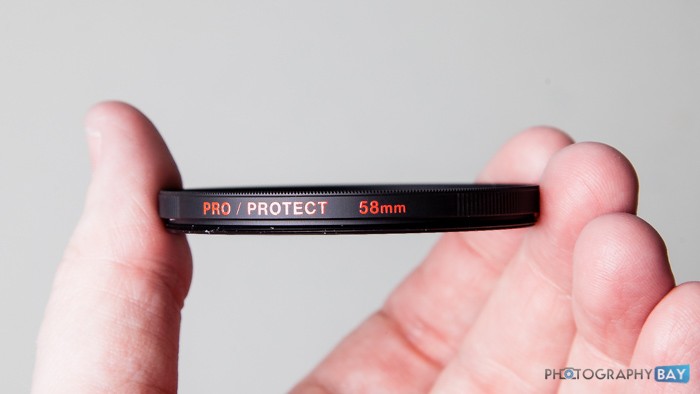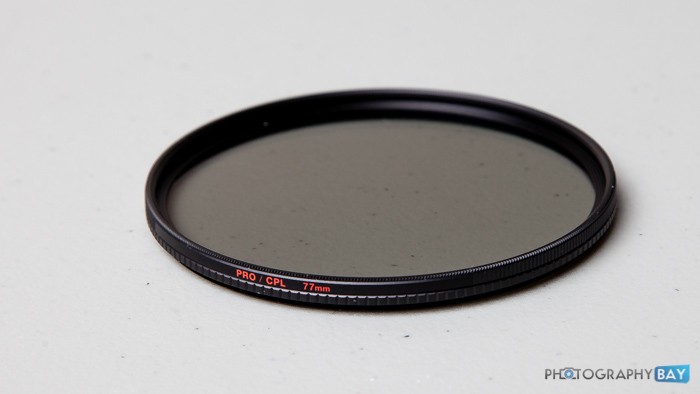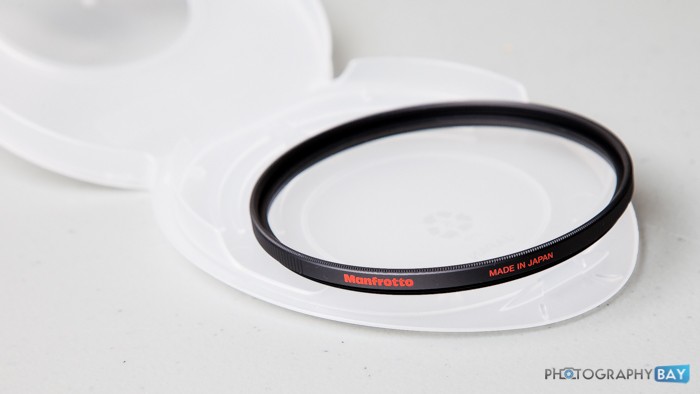Manfrotto recently entered the photography filter market with a series of several lens filters that are split among three product lines – Essential, Advanced and Professional. As you can probably tell from the names of the lines, they are scaled in quality and budget to meet various photographers’ needs.
According to Manfrotto, “Essential filters offer solid protection and a water repellent coating, Advanced filters offer increased protection, and Professional filters offer the highest level of protection due to layers of antistatic coating.” All of the filters feature anti-reflective coating, with higher-end models featuring more layers.
In addition to UV and circular polarizer filters, Manfrotto also launched a protection filter, which I find interesting. Before seeing this Manfrotto filter, I didn’t realize that protection filters were a thing, but apparently other manufacturers are doing that as well. Of course, I have always heard the argument of using a UV filter as a protection filter going back to my introduction to film SLRs in the 1990s.
I have gone back and forth over the years on the idea of using a filter as a lens protector. Putting another layer of glass in front of your lens is going to have an effect on absolute image quality. Whether anyone is going to notice or not is debatable. I have also seen plenty of examples where a filter on the end of a lens saved the lens when the camera was dropped.
In recent years, I have shied away from using a filter to “protect” my lens. If I put a filter on my camera, it is because I want it to affect the final image in some specific way. To each his own though. I get the reasons why you would and I am not here to tell you why you shouldn’t do that.

What I find intriguing about the Manfrotto Protect filter is that Manfrotto is just calling a spade a spade. Manfrotto doesn’t want you to use its UV filter as a protection filter. If you want a UV filter, use a UV filter. If you just want a filter for protection purposes, there is a dedicated option for that. Additionally, the Manfrotto Protect filter is only available in the Professional line. It transmits 99.3% of light and has 12 layers of coating as well as a strong anti-reflective surface.

When you first pull one of the new Manfrotto filters out of the box, it is clear that they are high quality. The machining feels precise on the thin frames. The Advanced and Professional Manfrotto circular polarizer (CPL) filters offer 12 layers of coating. The Advanced model transmits 68.1% of light, while the Professional CPL model transmits 90% of light. Both lines are water repellent, scratch and oil resistant. Additionally, the Professional CPL filter has an anti-static coating to keep dust and lint away.
I tested the oil and water resistant with intentional attempts to make a mess with water and fingerprints. I was impressed with the filters’ resistance to both. Water does not want to remain on the surface and easily wipes away with a lens cloth. Likewise, fingerprints are easily removed without smearing across the surface. The water is one thing, but the ease with which you can remove fingerprints is very impressive.
Optically, I have no critical remarks of any of the filters. The CPL filters perform well as a polarizing filter and reduce reflections as expected. I experienced no additional glare or visibly ascertainable loss of image quality in the various images I shot with them.
All Manfrotto filters come with a protective case and a 3-year warranty. Given the accessories, performance and ease of which they are to clean, Manfrotto has done well on its first outing with this new line of filters.
The filter line is available in 7 sizes, 52mm, 58mm, 62mm, 67mm, 72mm, 77mm and 82mm and range in price for $24.99 to $169.99. You can find them on Manfrotto’s website or here at Adorama.



While it seems like an odd direction for Manfrotto to turn I’m all for more choices when it comes to filters, especially regarding price points and budgets.